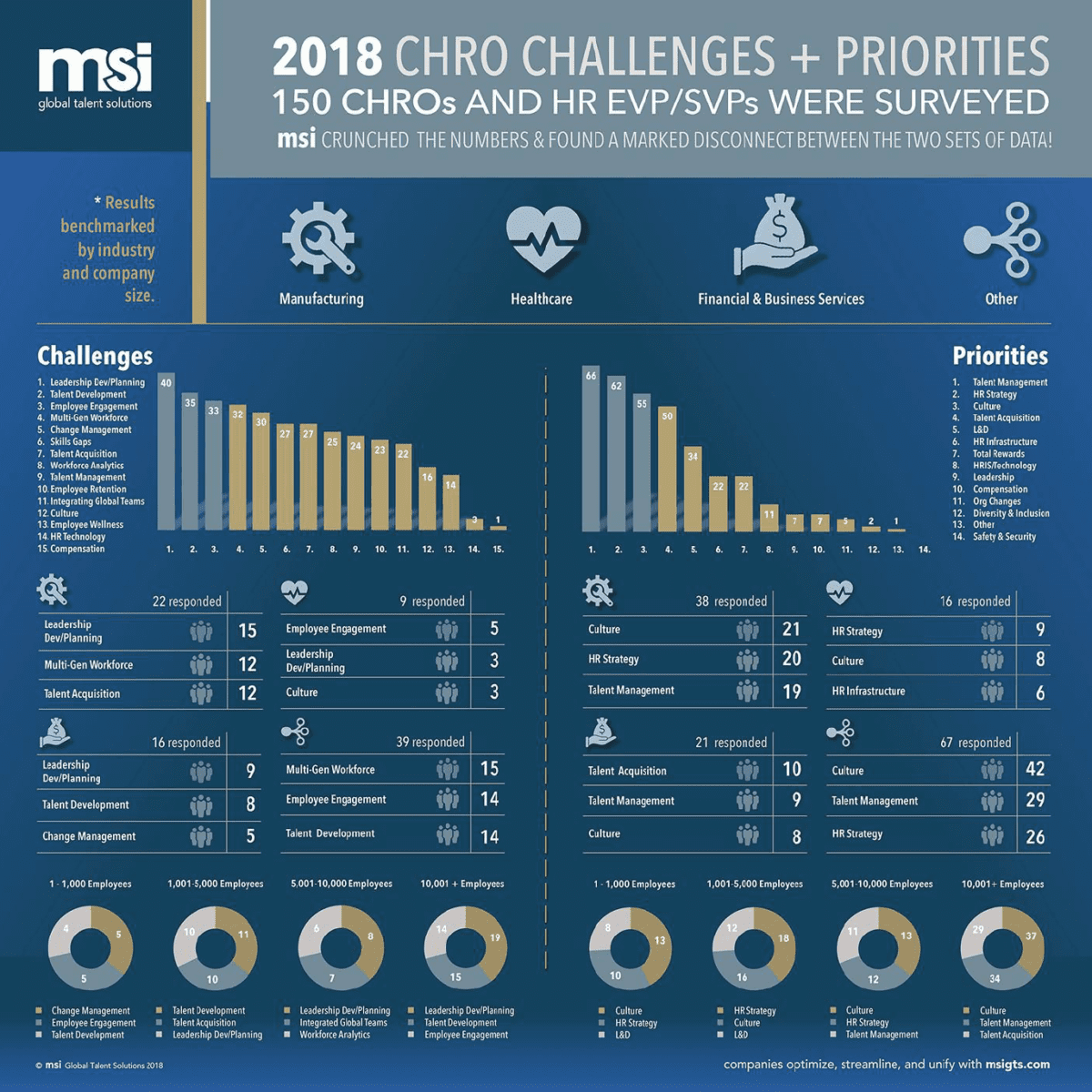A new study shows the top priorities and challenges of CHROs.
By Kim Raymond
The biggest concerns for today’s HR leaders most likely include a few that didn’t exist a couple of years ago: a record-low unemployment rate, medical marijuana, and new immigration restrictions. These are on top of the challenges that already existed -and still do. What this means, which should come as no surprise, is that HR is becoming more challenging and complex seemingly by the minute.
A recent MSI analysis provides additional details on the specific challenges that CHROs and other senior-level HR practitioners currently face, as well as the priorities and approaches being taken -or not -in response.
- HR challenges. Leadership development and planning is the key challenge facing the CHROs that were surveyed. The next three challenges are closely aligned and include talent development, employee engagement, and handling a multi-generational workforce. Interestingly, as listed below, the top priorities of CHROs are not always in sync with their stated challenges.
- HR priorities. Overall, the CHROs that were surveyed look to concentrate on talent management across the talent pool, closely followed by HR strategy. Positive corporate culture, improving the candidate experience from application through onboarding, and talent acquisition are also on the agenda.
The study found that areas of focus also include (in the order of importance): learning and development programs, HR infrastructure, total rewards, technology, and leadership. Creating a brand that attracts talent, while high on the list of challenges, did not make it onto the priority dashboard.
- Vertical variances. By industry, the study reports quite a divergence in both challenges and priorities. While manufacturing professionals list leadership development and planning as their biggest challenge, culture is their highest priority. Culture ranks in the top three of all industry verticals, yet only in healthcare it is also featured as a challenge. Talent management ranks highly in priority for all industries with the exception of healthcare, but doesn’t feature highly in the challenges department.
- Sizing statistics. Talent development appears as a top challenge across all sizes of companies, while once again, no matter the company size, culture ranks as the top priority. HR strategy is also marked as an area of focus for all companies except those with more than 10,000 employees.
So, what does this all mean? The study reports that the war for talent is forcing CHROs with already limited bandwidth to prioritize their initiatives in the fight to retain precious talent. With expectations of aggressive leadership development, learning and training programs, and cultural initiatives to engage existing employees and present an attractive employee value proposition to potential recruits, CHROs are under more pressure than ever before.
Kim Raymond is the senior vice president of global talent strategy for MSI Global Talent Solutions.















